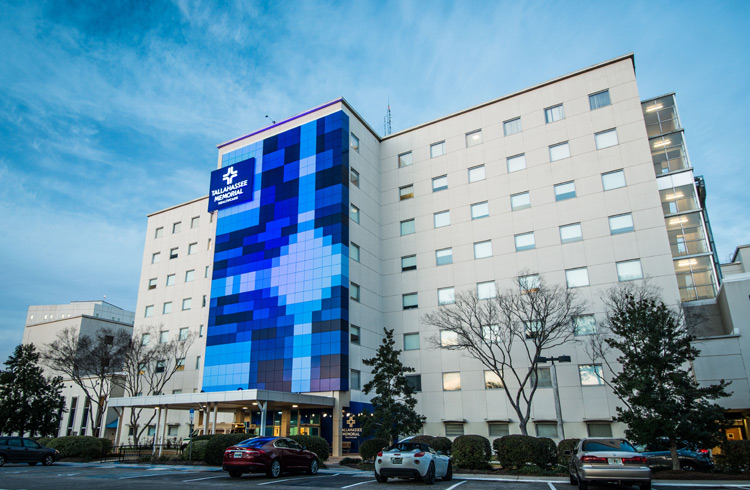Understanding Febrile Seizures in Kids
November 19, 2025
By: Tallahassee Memorial HealthCare
Categories: Healthy Living, Pediatrics
You might associate seizures with flashing lights or head trauma, but sometimes, a fever is all it takes for your child to experience one.
Febrile seizures, caused by a fever, can be alarming for parents but are not always cause for immediate concern. Most events do not produce lasting effects, and do not indicate that your child may have seizures later in life.
What are febrile seizures?
A febrile seizure is when a fever causes a convulsion and, in most cases, loss of consciousness in a child. These are most common among children between six months and five years old, with the greatest frequency occurring in one-year-olds.
Your child’s previous medical history is not always a risk factor in this event, as febrile seizures can occur among healthy children whose medical histories do not indicate any cause for concern. Most children outgrow febrile seizures around the age of five.
There are two types of febrile seizures:
- Simple febrile seizures do not repeat within 24 hours and do not occur in a specific part of the body. Additionally, they typically last anywhere from a few seconds to 15 minutes, with most ending around the 2- to-3-minute mark. If the seizure is longer than 5 minutes, call 9-1-1 for immediate medical attention.
- Complex febrile seizures last longer than 15 minutes or occur more than twice within 24 hours. They can be confined to one side of the body but do not have to be. These require immediate medical attention; call 9-1-1 if you suspect your child is having a complex febrile seizure.
If your child experiences a febrile seizure, it does not necessarily indicate further seizures later in life, neurological diseases, such as epilepsy, or brain tumors.
In North America, 2-5% of children have at least one febrile seizure and 30% of that group experiences a second seizure. Only 2-4% of children who experience a seizure develop epilepsy.
What causes febrile seizures?
The primary cause of febrile seizures are fevers. A low-grade fever—ranging from your normal body temperature to 100.4° F (38°C)—can sometimes trigger a seizure. Temperatures above 100.4° F are considered high risk.
Fevers that stem from infections are the most common causes of febrile seizures. Viruses such as the flu are the biggest contributor, with bacterial infections being the second leading cause.
Low-grade fevers caused by vaccinations can also be a basis for febrile seizures. Vaccines more likely to cause a fever are diphtheria, tetanus, pertussis and the measles-mumps-rubella vaccine. It must be noted that the fever, not the vaccination, is the cause of the seizure.
Risk factors for children for febrile seizures
The leading risk factors for febrile seizures are family history and age, with 12 to 18 months being the most common age range. Children with families that have experienced seizures due to fever in the past are more likely to experience them.
Additional risks include:
- Existing neurological impairment
- Abnormal development
- Decreased zinc and iron levels
- Maternal smoking and stress
While many febrile seizures only occur in a single event, they do have chances of recuring. The likelihood of a seizure repeating increases if the first seizure resulted from a low-grade fever, the seizure was the first sign of illness and the child was younger than 18 months when the first seizure occurred.
Preventing Fever Spikes in Children
Since most febrile seizures occur within the first few hours of a fever, taking preventative measures at the first sign of illness can procure the best outcome.
Some ways to lower your child’s fever are to dress them in light and breathable clothing, give them extra fluids and give them a lukewarm sponge bath. Medicines like infants’ or children’s Acetaminophen (Tylenol) or Ibuprofen (Advil, Motrin) can help reduce inflammation.
Giving child aspirin is linked to Reye’s syndrome, which can be fatal.
What to Do if Your Child Has a Febrile Seizure
If your child has a febrile seizure, follow these steps:
- Place your child on their side on the floor or ground.
- Clear the area of any objects near your child.
- Loosen clothing around their head and neck.
- Keep track of how long the seizure lasts.
Do not restrain your child or put anything in their mouth during the seizure. Do not put them into lukewarm water to cool off.
If your child experiences any of the following symptoms, call 9-1-1 or visit your nearest Emergency Center.
- Seizure lasting longer than 5 minutes
- Vomiting
- Stiff neck
- Breathing problems
- Extreme sleepiness
- A second seizure within 24 hours
Even if your child experiences a mild febrile seizure, it is still recommended to contact your child’s pediatrician. And if for some reason your child needs to be admitted into the hospital, rest assured that TMH is home to the region’s most advanced pediatric care team.

